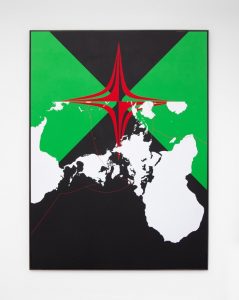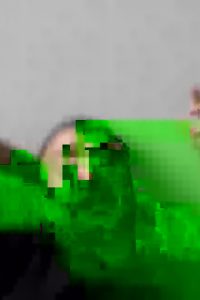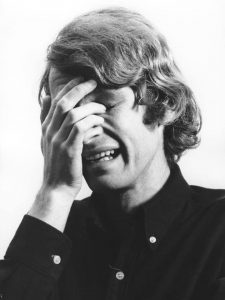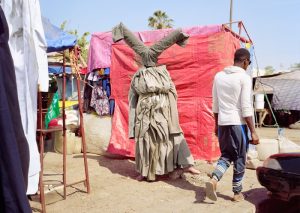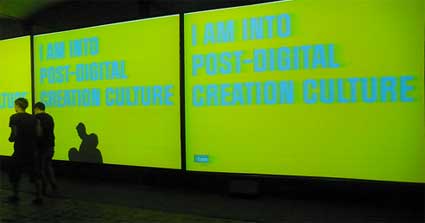
Just back from the OFFF festival which this year had the very good taste to move to Lisbon. Offf gathers designers, programmers, illustrators and visual artists whose creativity explores and fashions digital aesthetics and software language.
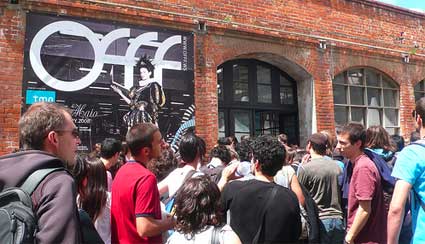
I’ll leave aside all the digital animation and pretty flash websites presentations and go straight to the keynote of the first evening which was performed more than given by web designer and artist Joshua Davis. I’ve always liked his works, they have something very girly in sharp contrast with his tattooed soft-punk image.
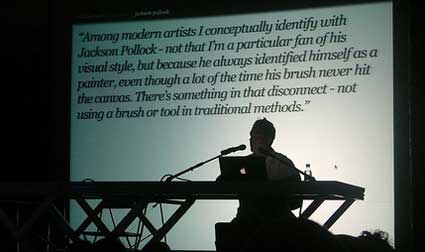
Davis likes Jackson Pollock, not so much for his paintings, more for his approach to gesture. Pollock regarded the process of its creation as art and not so much the final product. Like Pollack, Davis’ art is based on gestures, but he relies on technology to create. He designs programs which follow randomly what he draws. He sets the rules and the program takes from there, surprising the artist each time.
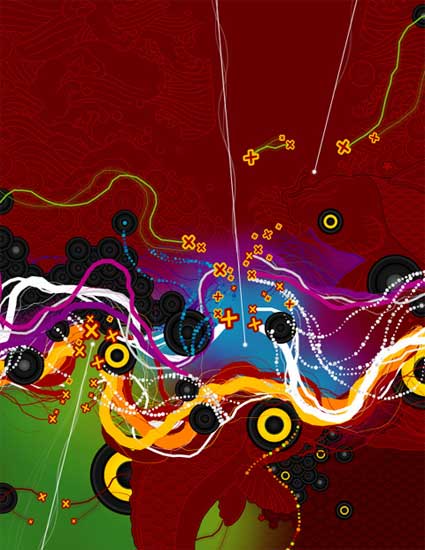 Soundwires, 2007
Soundwires, 2007
Davis never liked mathematics. He went to art school and had to teach himself math and programming. At art school he was mostly into painting and became obsessed with the idea of creating his own drawing tools and experimenting with his materials. He would put his paintings in the freezer but the outcome was disappointing: the paintings were cold, nothing else happened. More interesting things occurred when Davis baked his paintings in the oven: the varnish on top would dry faster than the oil of the painting. As a result the painting would shatter. But the lesson he learned was that he enjoyed the idea that he didn’t have total control over the final artwork.
According to Davis, computational design is divided in two clans: the purists and the hybrids. The purists are Ben Fry, Casey Reas, John Maeda, Golan Levin, etc. They only use code. The hybrid, like himself, Niko Stumpo, Geoff Lillemon and others blend the code with art works. The artwork is thrown into the swarm system and emerges as a series of art/design works which are all different from the other. The artists defines some parameters such as speed, rotation, indecision and the system maps the drawing according to these lines.
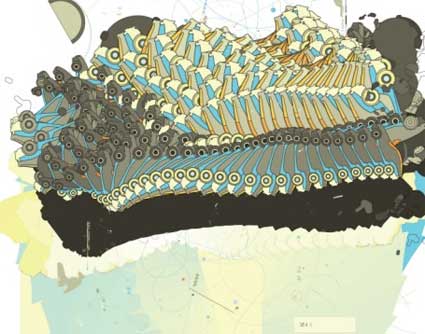
He was commisioned by BMW a series of limited edition prints that would “capture the essence” of the company‘ s Z4 Coupé. The artist translated a number of views of the coupé and its components into an algorithm that served as the basis for prints. Davis also selected geographic notes and scales from a German school atlas to act as a symbol of mobility in the prints. Video documenting the process.
Despite his reliance on programs and codes, Davis still sees his work as being one of an artist: he creates the programs, sets the rules, chooses the colours to use, feeds the program with his own handmade drawings and ideas and at the end of the process he takes the role of the critics by selecting which of the pieces made by the program will be kept or deleted.
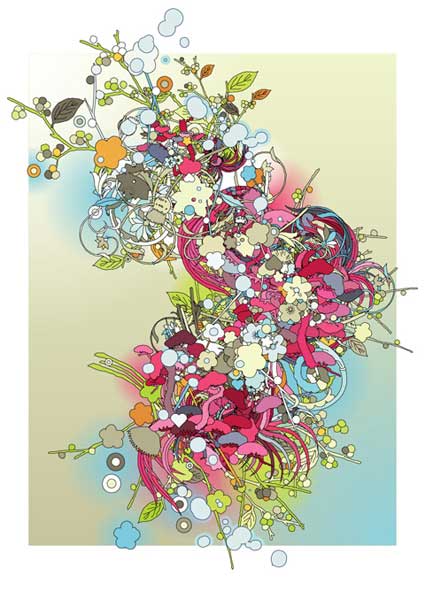 Kimono Blue, 2007
Kimono Blue, 2007
For example, to realize his Kimono series, he gathered the assets and forms found in his collection of books on Kimonos, drew them and fed them to the generative system.
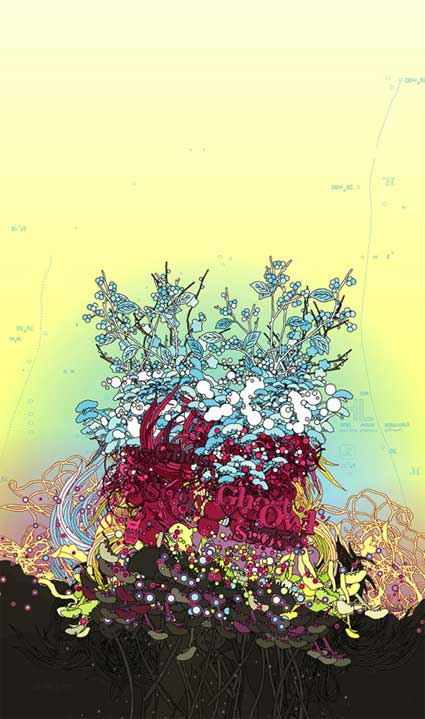 Adobe CS3, the Snow Owl, 2007
Adobe CS3, the Snow Owl, 2007
He selected only 250 of the resulting drawings. His limited edition prints are all different from each other. But instead of numbering them 1/1, he numbers them 1/250, 2/250, etc. The reason for that is that what matters is the program, not the visual output.
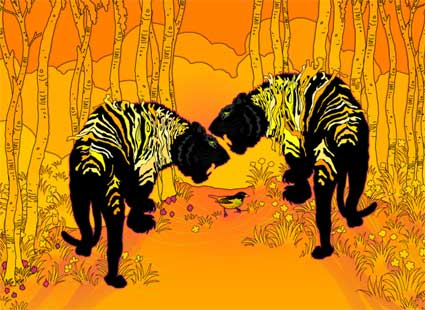 Yellow Tiger
Yellow Tiger
After some crazy hotel carpet stories Davis ran us through some of his latest works and exhibitions:
– His collaboration with Chuck Anderson for AMP Energy drink.
– The cover of the CD Yellow Tiger by Ming Dynasty,
– Solo exhibition at Maxalot Gallery in Barcelona.
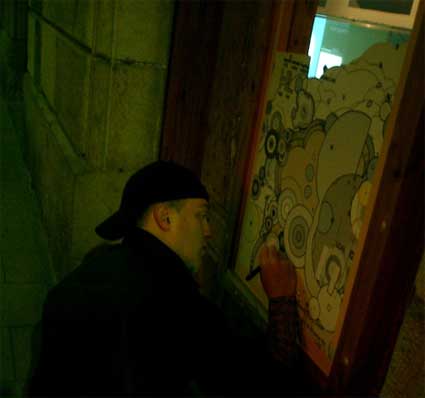 Drawing outside the Maxalot gallery in Barcelona
Drawing outside the Maxalot gallery in Barcelona
– projection on a building facade for the 4th edition of the TodaysArt Festival in The Hague.
– Davis commented on Random Assistant which was exhibited at OFFF too. Random Assistant is a long stripe of lack and white prints accompanied by transparent watercolors and brushes for the public to colour the print.
As usual, Davis used a generative system to create the artwork, leaving the decision making of the compositions to the programs. This time though, one of the components of the system which governs the way the work is colored and painted was removed from the software. Instead, the public will fulfill this functionality by using the brushes and watercolors at their disposal. Davis did a first version of the project in Rovereto (Italy) for the festival Futuro Presente. The OFFF version was incredibly successful.
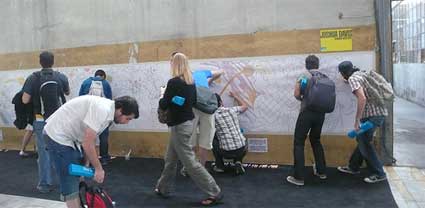 Random Assistant, OFFF, Lisbon, Day 1
Random Assistant, OFFF, Lisbon, Day 1
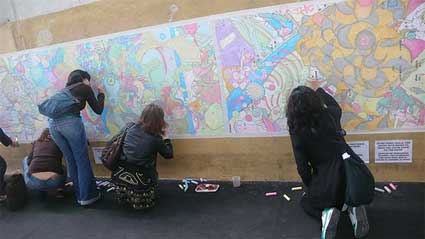 Random Assistant, OFFF, Lisbon, Day 2
Random Assistant, OFFF, Lisbon, Day 2
For Tropism in New York he worked on new organic forms to create a “super nature.” For the first time his generative graphics were turned into 3D-printed objects: a series of vases in porcelain.
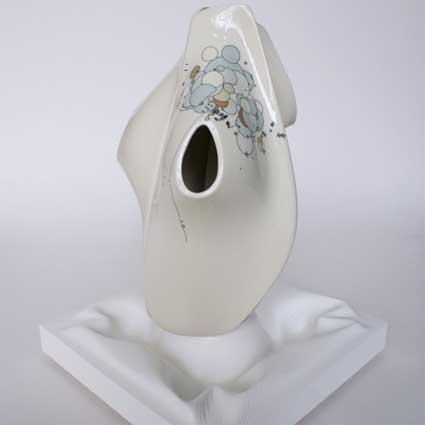 Tropism vase, 2007
Tropism vase, 2007
– To celebrate the launch of his first line of housewares (trash cans and pillows) at the Umbra Concept Store in Toronto, Davis used the Tropism Engine to generate huge panels (like he did at the OFFF Festival in New York.), he had them printed and pasted on the window of the shop.
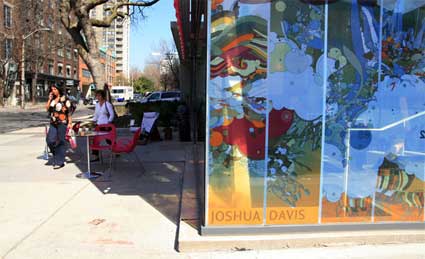 Image blogto
Image blogto
The artist then listed his sources of inspiration: there’s Basquiat, Cy Twombly, the indeed awesome 18th century painter Ito Jakuchu, the Batu Cave in Malaysia, etc.
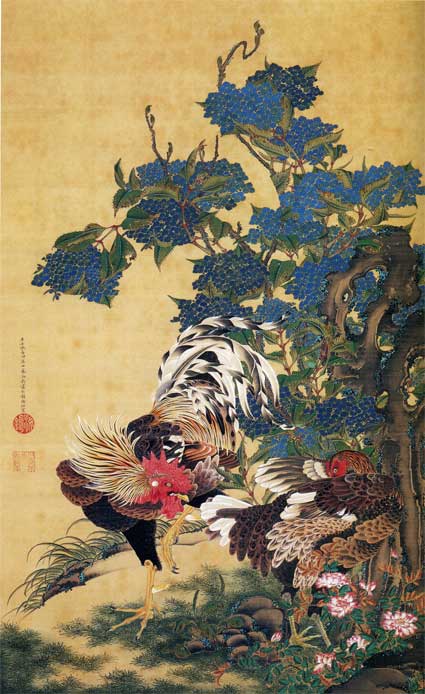 Ito Jakuchu, Rooster and Hen with Hydrangeas
Ito Jakuchu, Rooster and Hen with Hydrangeas
Davis ended the presentation with a list of (not very original) tips for the audience:
Look for what you don’t see in your immediate environment, you don’t have to fly to the other end of the globe to find some source of inspiration, make work for love, not for awards or acceptance, complacency is your enemy, find your own voice, if you are using someone else’s you run out of conversation pretty quickly. And work like hell.

